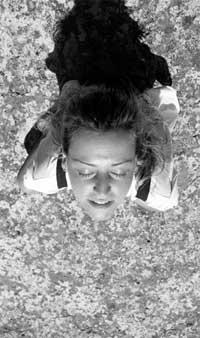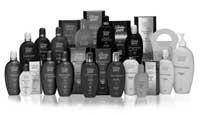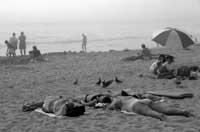This summer… blai in the sun!
At the beginning of summer we are wishing to take the caresses of the sun. Annual account. But we must not forget that sunbathing has risks.

For many, sunny days are beautiful. The sun gives them strength and strength to face the day, and especially in early summer they are wishing to take the caresses of the sun. Although it is an annual issue, we must not forget that in the love-hate relationship between skin and sun, the loser is always the skin.
Morcilla reward
XIX. At the beginning of the twentieth century, physicist Johannes Ritter showed that, together with visible light, the sun also emits invisible radiation. Since the wavelength of this radiation was shorter than that of blue and that of violin, it was called ultraviolet. Subsequently, the existence of three types of ultraviolets (UVA, UVB and UVC) with their respective influences was observed. UVC rays would be the most dangerous for the human being, but fortunately they cannot cross the atmosphere. As for UVB rays, only 0.25% can reach the terrestrial surface, but cause serious damage to the skin. Finally, UVA rays are the most abundant and cause blackening of the skin.
For most cases, the main reason for subjecting the skin to the sun's rays is tanning. Only some know that in the process of tanning the ultraviolet rays kill the skin cells. Other consequences are evident: dilation of the blood vessels and redness of the skin, appearance of blisters in case of intense burning, loss of skin after burning, appearance of spots, etc.

In fact, the skin has a solar protection system. The most effective is melanogenesis, that is, the production of melanin. Melanin is a pigment that provides a tanned color to the skin and has the capacity to absorb 90% of the ultraviolet rays that cross the outer layer of the skin. The production of melanin increases when sunrays are received, but the amount of melanin varies greatly from one person to another. For this reason, some are more tanned than others, so they have greater protection against sunburn.

However, this protection is limited and if you spend too much time under the sun is not enough to avoid damage. In addition, the effects of solar radiation are stored in the memory of the skin, that is, the damage accumulates and the diseases that appear later are consequence of child burns. Thus, especially due to UVA rays, the skin ages prematurely and wrinkles appear, while UVB rays can cause cancer.
UVB rays can alter the structure of cellular DNA, so the cells do not "die" when they arrive and reproduce in excess. Finally, cancer appears. Before we realized this, doctors detected a huge proliferation of cases of skin cancer, especially in Australia and the US. Many of its inhabitants have a very white skin and decades ago the body that was fashionable was chocolate color. Later it was observed that for many years this increase was due to the defenselessness of the sun. In addition, as the ozone layer is increasingly thin, the passage of the rays to the terrestrial surface has been facilitated. Therefore, we must be more careful with the sun.
Strength of the Sun according to place

Latitude of latitude
: the closer you are to the equator, the stronger you have.- Time: Despite thinking that clouds protect from the sun, high and light clouds let pass 60-80% of ultraviolet rays.
- Altitude: the higher it is, the higher the risk of burning, for example, in 1,500 meters the sun is 20% stronger than at sea level.
- Water: 96% of ultraviolet rays pass through transparent water.
- Time: The risk of burns is higher at noon and in the early afternoon.
- Clothes: half of the ultraviolet rays are able to cross the wet clothes.
- Surface: As snow and sand reflect the rays, the risk of burns increases.
To each skin your own

Depending on the genetic characteristics and the amount of melanin, we have more or less natural protection against the sun, and from the whitest to the blackest are distinguished six phototypes. It is important to look at the personal phototype to know how much we need protection.
- Type I or albinos are of very white skin, with red or yellow hairs and light eyes. They always burn with the sun, so they need total protection.
- Those of type II or germanic have white skin and clear hair and eyes. They are easy to burn and require protection factor creams 10-15.
- Those of type III or mixed skin have white skin and brown hair. They burn little and go coloring little by little. They require a protection factor 6-8.
- The skin of type IV or Mediterranean is light brown and with dark eyes. They do not burn easily and tan quickly. Therefore, they have a protection factor of 4-6.
- Those of type V or Indians have dark skin, eyes and hair. They barely burn and tan very quickly. With protection factor 2, they are sufficient.
- The skin of the VI or black types is very dark and their eyes and hair are black. They never burn and do not need special protection.
In soft sun

Although excess sun is harmful, we cannot deny that the sun has its good side. For example, in the skin produces a synthesis of vitamin D that allows intestinal absorption of calcium and phosphorus. On the other hand, it helps to mitigate depressions, since in countries with long winters and few hours of sunshine (Finland, Norway...) the lack of sun increases depression, irritation, fatigue, insomnia and the tendency to suicide. In addition, it strengthens the immune system, stimulates blood circulation, improves rheumatism, increases the number of sexual hormones and, in the case of the skin, positively influences psoriasis, atopic eczema and other skin diseases.
Who needs sun?

The season of solar adorers has ended. But there are those who, despite not wanting to see the sun, do not want to renounce the brown skin and for them are ideal creams that blacken the skin without submitting them to the sun. These creams carry a molecule called dihydroxyacetone (DHA). DHA is associated with the proteins of the outer layer of the skin and when oxidized with air contact gives a dark color to the skin. However, the color is disappearing day by day with the loss of these cells. On the other hand, the brown color thus obtained does not protect the burn of the sun's rays, so despite being in tanning, the protective cream should be used exactly the same.
Solarium, interior sun

Solariums emit ultraviolet rays, so the process of blackening is similar to that of sun exposure. They are mainly UVA, so the UVB are very harmful. However, although UVA rays are not as carcinogenic as UVB, they cannot say they do not cause any damage. Therefore, you have to be so careful in the solarium as in the sun exposure.
Taking care of the skin through the mouth
To keep skin elastic and well hydrated, a proper diet helps a lot. For example, you need to drink enough water, about a couple of liters a day. Vegetables and fruits have plenty of water and, like olive oil, also contain antioxidants, which contributes to the fight against premature aging of the skin. Tobacco, alcohol, and other toxins play backwards.

Some fruits and vegetables are especially indicated for skin care and to maintain a nice color: carrots, peaches, tomatoes, peppers, spinach, apricots... They have a lot of beta-carotene, a form of vitamin A so beneficial to the skin.
Method of shade

When is the sun more harmful? It's easy, look in the shade:
- If the shade is shorter than height, there is a high risk of burns.
- If the shadow is the same as one, it is more difficult to smoke, but you have to be careful.
- When the shade is twice as long as the height, the sun is almost harmless.
The best of the sun, the shade

This is what an old proverb says and there is no lack of reason. However, being in the sun is a pleasure for many, and others have to be under the sun because the activities they like are done outside or because they work outside. However, thanks to solar creams can be quieter, as they provide the essential help for not smoking. On the shelves of the shops there are many products to protect and calm the skin in front of the sun. The main component of these creams are solar filters.
Its function is to reflect or absorb solar radiation and are of two types: chemical and physical. The chemicals absorb ultraviolet rays, receive ultraviolet energy, and transform to avoid damage to the skin structure. Physical filters are made up of minerals capable of reflecting the radiation.
There are creams of greater or lesser protection depending on the characteristics and quantity of the filter. The filter efficiency factor (FPS) appears on the label, indicating how long it can remain without sun damage. For example, if anyone with normal skin can make a quarter of an hour in the sun without burning, thanks to the FPS-15 cream, it can take 15 times longer, that is, almost four hours. Eye! When sweating, when you come in contact with clothes or towel or bathing the cream is lost, so it is necessary to renew it frequently. In addition, the cream should be applied half an hour before sunbathing, and make sure it covers the entire surface.

In addition to filters, solar creams contain beneficial components for the skin. Some, such as vitamin E, fulfill a function of skin care and restoration. This vitamin is antioxidant and, by trapping free radicals, prevents premature aging of the skin. The role of various oils and aloe vera plants is similar. Hyaluronic acid, glycerin, and other agents collect water from the atmosphere and introduce it into cells, while other oils form a layer that prevents the loss of moisture. Finally, preservatives and aromas are added to the solar creams.
Published in section D2 of Deia.
Buletina
Bidali zure helbide elektronikoa eta jaso asteroko buletina zure sarrera-ontzian











